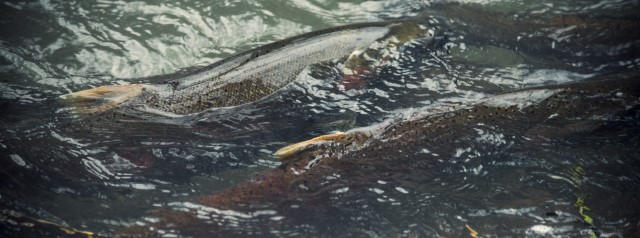Chehalis Basin Strategy
The Chehalis Basin Strategy is an ambitious collection of potential actions to address the challenges of extreme flooding and degraded aquatic habitat in the Chehalis River basin, the state’s second-largest river drainage system.
The basin-wide strategy includes near- and long-term actions as well as small- and large-scale projects designed to achieve a two-pronged objective:
- Reduce flood-related damage while also restoring aquatic species habitat in the Chehalis River basin. The roots of the strategy go back to 2014.
Inaction too hefty a price
Not taking action in the basin could cost Washington as much as $3.5 billion during the next 100 years, including:
- Repairing or replacing flood-damaged homes, businesses, and public infrastructure
- Disruptions to local community, economic, and agricultural activities from flooding
- Interruptions to state road and rail transportation corridors due to flooding
- Continued aquatic habitat degradation and loss
Aquatic Species Restoration Program released
We have worked in partnership with representatives from the Quinault Indian Nation, Confederated Tribes of Chehalis Reservation, state Department of Fish and Wildlife, and other technical experts to develop the Aquatic Species Restoration Program (ASRP) as part of the Chehalis Basin Strategy to restore the ecological health of the Chehalis basin.
The goal of the ASRP is to create a comprehensive, science-based restoration plan that improves and protects habitats, ecosystem processes, and populations of salmon, and other native fish and aquatic species while creating flood- and climate-resilient systems that support human needs in the basin.
Initial Chehalis Basin Strategy work
Photo courtesy of Washington Department of Fish and Wildlife.
Work on the Chehalis Basin Strategy started under the Governor's direction in 2014, when the state executive convened the Chehalis Basin Work Group which recommended a path forward to:
- Reduce flood damages in the Chehalis River basin and restore aquatic species habitat in the near-term.
- Consider long-term, large-scale strategies to reduce flood damage while improving aquatic habitat.
As a non-voting work group member, we helped develop and review technical studies to support decisions. Most importantly, the work group helped form the Chehalis Basin Strategy. In December 2016, the work group:
- Recommended a 2017-19 work plan and budget.
- Advocated funding important near-term early action projects to improve habitat and reduce flood damage in the basin.
Environmental assessment weighs potential strategy actions
To support the work group’s recommendations, we prepared a programmatic Environmental Impact Statement (EIS) in June 2017 to assess the potential environmental impacts of four potential combinations of actions to reduce flood damages and restore aquatic habitat in the basin.
Each alternative we assessed included a unique suite of actions, characterized by different combinations of small, localized actions as well as broader, basin-wide actions. Our assessment also included a "no action" alternative.
Legislative direction and support
The 2016 Washington Legislature passed House Bill 2856 establishing a new implementation framework for reducing flood-related damages while restoring aquatic species habitat in the basin by:
- Clarifying the elements of the Chehalis Basin Strategy.
- Establishing the Office of Chehalis Basin within Ecology to lead implementation.
- Creating the Chehalis Basin Board to provide long-term oversight.
Under the 2016 bill, state lawmakers defined that the strategy:
- Will contain a detailed set of actions to reduce flood damage and improve aquatic species habitat.
- Must include an implementation schedule and quantified measures for evaluating the success of implementing the strategy.
- May be amended by the Chehalis Basin Board to include new scientific information and needed changes to achieve the strategy's overall propose.
Related links
Contact information
Curt Hart
Communications manager
curt.hart@ecy.wa.gov
564-250-2126



